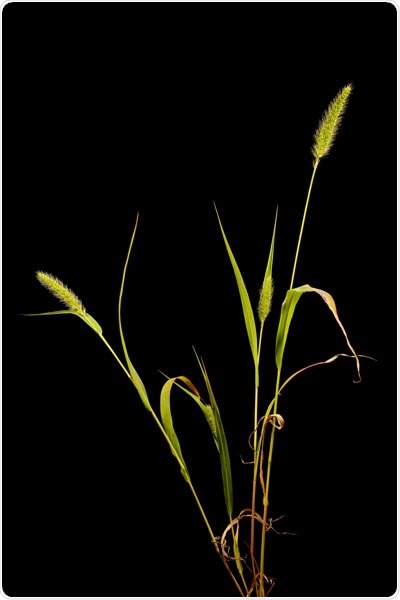Thanks to a new genome resource created for green millet, researchers will be able to study the genetics of crucial traits in crops, like sorghum and maize, in a much better way. The resource was created by three RIKEN scientists.

A genome resource for green millet (shown here) will help scientists find the genes controlling agricultural traits in important crops. Image Credit: © Valery Prokhozhy/Alamy.
The significance of the new genome resource has already been demonstrated by detecting the gene in foxtail millet that accounts for seed shattering—the process through which plants discharge seeds, which is crucial for plants to spread in the wild but significantly contributes to yield loss in crops.
The genome resource includes a reference sequence from green millet line A10.1 along with the sequenced genomes of almost 600 diverse green millet samples. The genome resource was organized by an international research team, headed by Elizabeth Kellogg from the Donald Danforth Plant Science Center, Jeremy Schmutz from the Department of Energy Joint Genome Institute, and Hitoshi Sakakibara from the RIKEN Center for Sustainable Resource Science.
Initially, the team utilized the novel tool to study the evolutionary history and population structure. A study based on genetic modifications detected many subpopulations extracted from distinct Eurasian gene pools. This analysis also demonstrated that certain populations in North America are admixtures of diverse Eurasian subpopulations, supporting the concept that green millet originated from Eurasia and entered North America via many routes, after which the founding populations scattered and combined together.
The researchers also used the new genome resource to study selection and domestication, creating new techniques to examine the genomic data.
This allowed us to map the presence and absence of gene variants, even for genes not in our genomic reference. It also enabled us to analyze structural variants better than what is usually possible from short-read sequencing data.”
Jeremy Schmutz, Department of Energy Joint Genome Institute
The researchers looked at the associations between different types of genomic changes and environmental variables, and studied the adaptions of green millet to different conditions. While they did not find many loci associated with the abiotic variation, they did find signs of selection on several genes implicated in flavonoid metabolism.
Many flavonoid compounds are thought to provide defense against pathogens and being eaten by animals. Because herbivores and pathogens differ in different geographical regions, we might expect plant defense compounds to differ as well.”
Elizabeth Kellogg, Donald Danforth Plant Science Center
The researchers finally used the new genomic tool to establish how the domestication of millet had decreased seed shattering. The team detected one specific gene associate with variations in seed shattering, which had been mutated in the case of domesticated foxtail millet. Then using CRISPR–Cas9 gene editing to remove the gene in green millet, the team verified its role to decrease seed shattering.
Since green millet is a model species for studying associated crops, like maize, millet, and sorghum, this useful genome resource can help unravel the evolutionary history and biology of the crops and detect genes for biotechnological enhancement.
Source:
Journal reference:
Mamidi, S., et al. (2021) A genome resource for green millet Setaria viridis enables discovery of agronomically valuable loci. Nature Biotechnology. doi.org/10.1038/s41587-020-0681-2.